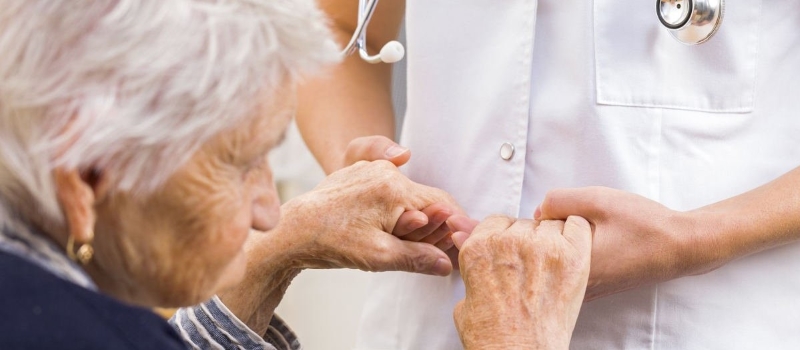Role of Physiotherapy in improvement of Parkinson’s patients
The nerve cells inside your body work in a smooth harmony, receiving the orders from your brain through dopamine to convert it into motor activity, and the situation remains normal as long as the substantia nigra that makes dopamine is intact and correct, but suddenly.. it becomes damaged! what is happening? Those cells that produce dopamine start to die, and there is no dopamine, so where do neurons receive brain signals from?
In this case, the person suffers from Parkinson's disease, which results from the failure of neurons to receive the brain's signals for a lack of dopamine, so movement begins to lose its smoothness and harmony.
Symptoms of Parkinson's disease do not appear immediately, but with the gradual death of most of the cells of the substantia nigra responsible for dopamine, about 80% of them, and this means that the sufferer will not realize that he suffers from it only when his body collapses to a large extent, but symptoms often include movement problems such as:
- Muscle stiffness that is similar to arthritis
- Significant slowness of movement even in the simplest motor skills such as buttoning up a shirt
- Shivering and trembling of the extremities, especially the hands, arms, leg, lips, jaw and tongue
- Loss of balance in gait and inability to walk long distances
- Bladder problems, mood swings, and sometimes depression
How do physical therapy sessions at home help support a Parkinson's patient?
- Maintaining a level of functionality that ensures the patient's independence
- Improving a person's quality of life in terms of self-care
- Improving movement and its range through various training strategies
- Improving and correcting the body position and improving its condition
- Strengthening and strengthening muscles and joints
- Improving balance to reduce the risk and possibility of falling
- Enhancing the patient's ability to breathe through a good pattern
- Awareness and education about Parkinson's disease and how to deal with it
- Enhancing the positive effects of drug treatments
What is included in physical therapy sessions at home for Parkinson's patients?
The physical therapist at Capital combines several techniques to maintain health and wellness and improve strength, endurance, flexibility, functional abilities, and balance ability, through:
- Principles of motor learning such as mental images and dual tasks
- Aerobic exercises to slow degeneration and decline of motor skills
- Strength exercises with external resistance such as resistance bands
- Balance and physical performance modification exercises
The physiotherapy sessions offered by Capital at home can achieve a reasonable amount of partial improvement that helps reduce the severity and strength of symptoms.
It was found that improving movement and increasing physical activity equal to 2.5 hours per week helps to improve the quality of life in patients with Parkinson's disease.
Request Home Care Services in Saudi Arabia
Requesting home care services in Saudi Arabia from Capital Home Care is a straightforward and easy process.
- Phone: Reach out to Capital Home Care directly at +966 12 227 6270 (Office) or +966 9200 10 689 (Toll-Free)
- Website: You can submit a request by clicking HERE
- Email: Send an email detailing your needs to info@capitalambulance.sa
- Visit in Branch: Alternatively, you can also visit Capital Home Care's office at 7846 Hira - 2488 An Nahda District - Jeddah, Saudi Arabia. Office hours are from 9:00 AM to 5:00 PM, Saturday through Thursday.
Once your request is received, a member of the Capital Home Care team will conduct an initial consultation to determine the specific needs of the patient. Following a comprehensive assessment, a tailored care plan is designed and implemented, ensuring the highest standard of home healthcare delivery.
Whether you are searching for a home care nurse, in-home physiotherapy, doctor-on-call, home lab, or extended home care services, Capital Home Care is your reliable partner in ensuring optimal health and well-being for you and your loved ones.
REFERENCES:
- https://www.webmd.com/parkinsons-disease/parkinsons-disease-overview
- https://www.physio-pedia.com/Parkinson%27s_-_Physiotherapy_Management_and_Interventions
- https://www.physio-pedia.com/Parkinson's_-_Physiotherapy_Referral_and_Assessment?utm_source=physiopedia&utm_medium=related_articles&utm_campaign=ongoing_internal



